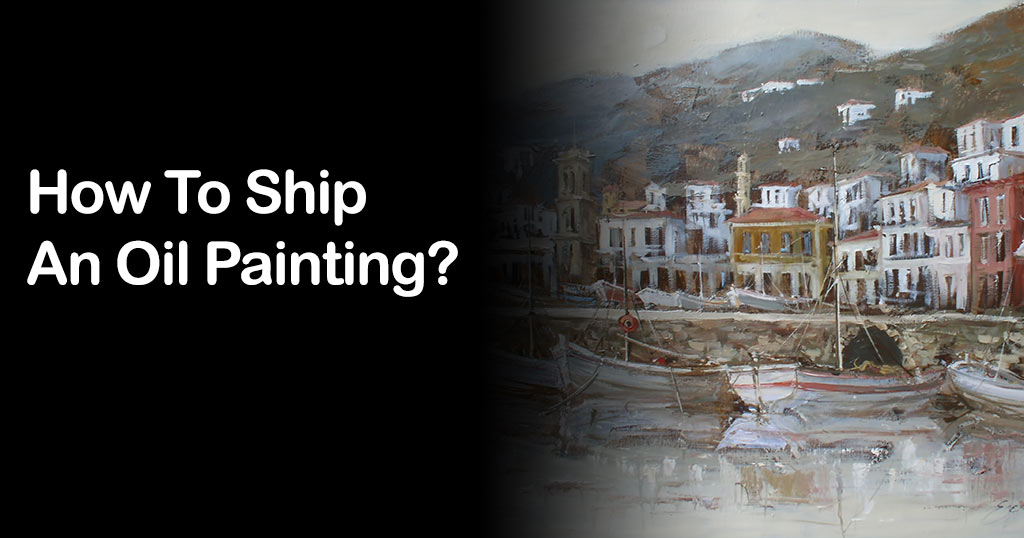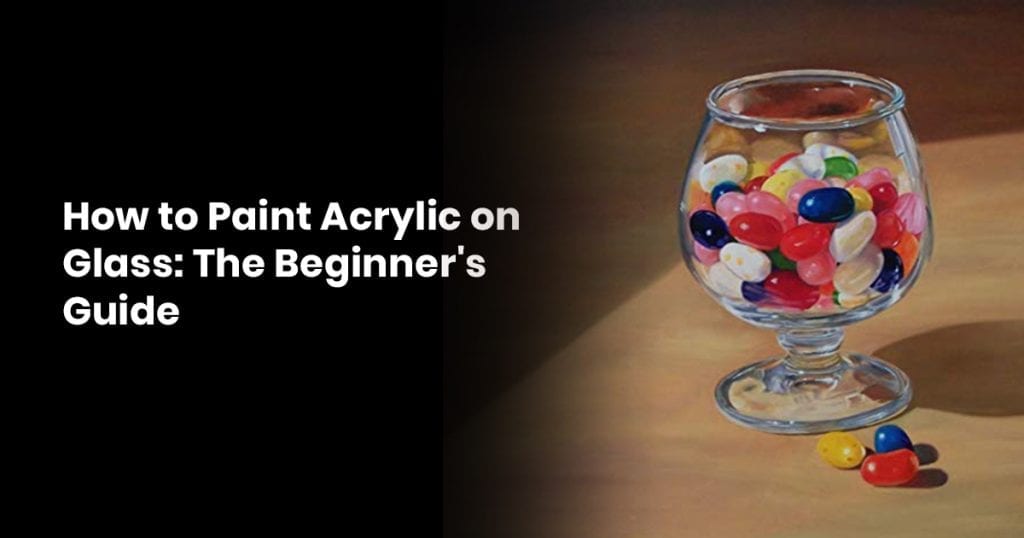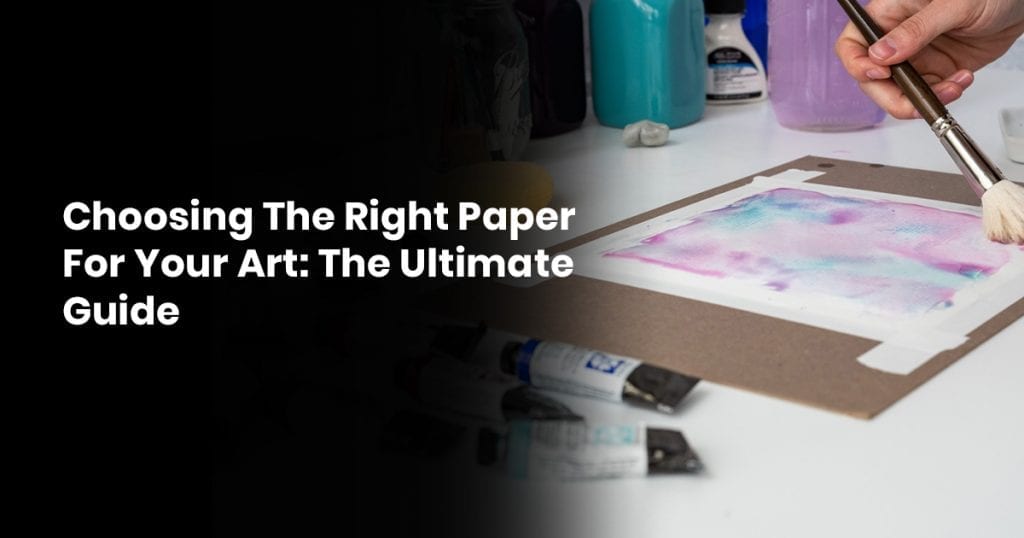One of the most important considerations, when one is looking to sell or gift an oil painting, is how to get it from one place to another. It’s possible to ship an oil painting by mail, but this must be done with care and caution. There’s a right way to package and ship a piece of artwork, and the more valuable and delicate the piece, more attention is required. Learn more about the shipping requirements for oil paintings.
Contents
The Importance of Care When Shipping Oil Paintings
If you are an artist or art seller, you might have to get your paintings to customers in a different city, state, or even country from where you live and work. It might seem like a lot of work to offer this option, but it is a vital way to expand your market beyond the local scene.
Shipping oil paintings by mail comes with some additional considerations. There can be a significant cost to do this the right way, especially if the painting is large. You have to figure out how to strike a balance and minimize the shipping costs without putting your artwork at risk of loss or damage.
Oversized pieces naturally attract higher shipping costs, so this is just one of the things you need to pay attention to if you are going to be shipping these often. If you only need to make a one-time shipment of a large oil painting, then this may be less of an issue for you.
If your paintings are of high value, you might have to think about the security of the artwork. Oil paintings can also be very delicate, so regardless of the shipping method you use, the artwork must be safe from moisture damage, scratching, and other factors that could compromise it in any way. The packaging that you use is critical, and you can learn more about the best way to package an oil painting in this article.
Another factor that influences how you package and ship a painting is whether or not it has a frame. A framed picture is more rigid and weighs more than an unframed painting, which you can roll up into a smaller volume.
Before you start the packaging process, you should make sure that the oil painting is dry. Make sure you double-check that the specified drying period has been given to prevent major damages to the surface of the painting during the packaging and shipping stages.
What Is the Cheapest Way to Ship a Painting?
It has already been mentioned that shipping costs can be significant when shipping paintings. One reason for this is that these pieces can be large. They are also fragile and cannot be folded or fitted into a convenient standard box size. Additional handling fees may apply because of these facts.
There are various painting shipping options, but if you are looking for the most economic one, you have to assess each of them in turn. You can opt to use a regular carrier for your artwork parcel or find a specialized artwork shipping company. Several services help gallery owners and artists to transport their work hassle-free both locally and internationally. It’s always a good idea to get in touch with them and find out about their prices and services.
Whether you want to use specialist art logistics services or a regular mail carrier, you are going to have to provide them with some information to determine the price of the shipment. Typically, this information includes the dimensions and weight of the painting, its value, as well as the initial and final destination addresses.
Many postal carriers have online price calculators on their websites for your convenience. All you have to do is enter in some information and you can get a rough estimation of how much it is going to cost you to ship the painting. You can play around with this tool to find a good price.
Here are some ways to cut the costs of shipping your painting:
- Try to minimize the weight of the package as much as possible without risking its protection. If you are only shipping the art piece a few hours away, you might not have to bother with a large protective wooden crate. Forgoing this standard for large art pieces can save you a bit of money.
- Compare different services by requesting shipping quotations. You should know why you are picking the service you have decided on. You can look at cost, convenience, packaging assistance, and reviews to make a cost-benefit analysis.
- If your painting is not yet framed, you can delay the framing process if you can get it done on arrival at the destination. Unframed paintings weigh less. They are also more flexible with regards to how you package them. You may be able to roll up the painting, in which case you can save a lot of space and cut the cost of shipping the art piece.
Important Considerations When Packaging an Oil Painting for Shipping
The packaging stage is a critical one, especially when dealing with something as delicate and potentially valuable as an oil painting. You might get everything right, but the shipment’s success largely hangs on the quality of your packaging. When dealing with long-distance shipping and rain and moisture considerations, the packaging’s integrity becomes even more essential.
For maximum protection of your oil painting, most experts recommend that you place the art piece inside a wooden crate. To avoid damage on impact with this delicate piece, it is better to use a custom-built crate to cater to its actual size and dimensions. Using such a protective case is imperative when shipping internationally. If your painting is no going to be in transit for all that long, you can get away with using a rigid cardboard box. You must first wrap the painting itself in soft packaging as a protective buffer.
Since the packing stage is vital to the preservation of the quality and integrity of the oil painting, you can find some helpful tips you can make use of below. You can apply these if you are dealing with a large and expensive art piece that has a frame and has a glass cover.
The first thing you have to do before you package and ship your painting is to measure its dimensions. You need to know the height, length, and width of the art piece to determine the best way to ship it and the best packaging to use. This information is also very important when it’s time to determine the costs of the shipment.
Once you know exactly how large or small your painting is, you can decide on the most appropriate shipping container. Even though the cost of shipping the painting might be a significant factor in deciding how you want to ship the artwork, it’s always better to prioritize safety and protection. It is much better to pay more and have the assurance that your delicate and valuable piece is going to arrive at its intended destination in one piece and in good condition.
According to the UPS website, it is best to ship unframed artwork larger than 48 x 48 inches in a wooden crate. The mailing service also recommends that framed pieces that exceed 18 x 24 inches are better off being shipped in a wooden crate, as well. In most cases, you are going to want to use a customized crate to make sure that the wrapped painting fits snugly into the container without leaving too much wiggle room.
There are many options when you are looking for a wooden crate builder. You can find out how to build your own customized wooden crate or use a specialist service. If you have time for a DIY project and are skilled in this area, it might be cheaper to build one for yourself. If you operate a gallery and have multiple art pieces to ship, it makes sense to outsource the crate-buildings stage.
The same applies to packaging the painting for shipment. This step is easy enough to do on your own using a few handy art and shipping materials. Alternatively, you can save time by outsourcing the painting packaging process as well. Most mailing services and specialist art logistics companies offer art packaging services as an add-on for anyone looking for convenience and professional packaging.
How to Package an Oil Painting for Shipping
Here are some of the most important packaging materials you may need, depending on the size and type of the painting:
- Acid-free artist tape
- Foam or cardboard protectors
- Sheets of cardboard
- Packing tape
- Bubble wrap
- Acid-free glassine paper
- Double- or triple-wall cardboard box
- ‘Fragile’ and ‘Handle with care’ shipping labels
As far as tools, you should have a pair of scissors and a tape measure. Some additional optional materials and tools you might want, depending on how you want to package your painting, include cling film and a shipping scale.
When you are packaging your painting for shipment, you should be very careful with how you do it. While the process necessitates that you handle the art piece a lot as you wrap it, secure it, cover it, and possibly roll it up, you must still do this with caution. It is not uncommon for a delicate painting to experience some damage during the packaging process, even before the art piece is collected or delivered for shipping.
Make sure that you avoid adding fingerprints to the painting’s surface. These can create unsightly blemishes on the surface of the artwork. If you are working with any high-gloss art, you need to use art-handling gloves made of either dustless nitrile or cotton.
Here are the stages you can follow to wrap your artwork for shipping:
- Mark one or two ‘X’ shapes on the glass using artist tape. To do this step, you are going to need to cut two or four pieces of the tape and tape them to the glass or acrylic surface in an overlapping star shape. Doing this is essential because it protects the painting’s surface if the glass or acrylic breaks during shipping. An alternative method here is to wrap the entire art piece tightly with some cling-wrap. In the unfortunate event that the glass cover breaks in transit, the wrapping prevents the pieces of shattered glass from becoming loose and puncturing the painting.
- Use the special protectors you chose to protect the edges and corners of the frame. You can secular the triangular protectors to the corners with artist tape. This step is critical for both framed and unframed mounted pieces. The edges of a painting are very susceptible to damage, so you need to protect them as much as possible.
- If your art piece does not have a frame, remember to cover it with glassine paper. When choosing which product to use, make sure you find an archival-quality and free of acid option. The glassine paper should cover all the sides and edges of the painting. It protects the art piece from both moisture and dust. With canvas or linen-based paintings, make sure you place the artwork face down on the glassine paper before you roll it up. If your artwork is paper-based, then it should be placed face-up on the glassine paper.
- With bubble wrap, cover the art piece. For maximum protection, it is best to use multiple layers. If you are looking for an alternative to bubble wrap, you can also use cardboard, foam, or cloth. This step is very important because it protects the surface of the painting from scratches and scruffs.
- Use cardboard sheets or foam boards to cover both the front and the back of the bubble-wrapped painting. The ideal thickness of these protective boards is at least 1 ½ inches. You can secure these in place with the help of some packing tape and add some additional tape to the whole ‘sandwich.’ It is essential not to tape too tightly because this extra pressure can damage your painting.
- Put the painting inside the thick-walled box or the crate and add padding. You should have this padding in place to secure the painting and prevent impact, movement, and friction during the shipment. There are several options as far as padding material. If you still have some bubble-wrap left over, you can fit this carefully into the empty space in the box. You can also use special art padding foam. Packing peanuts are not ideal in this case.
- With packing tape, secure the box. You want to use strong, high-quality tape for this final step in the packaging process. If you use poor-quality tape, duct tape, or another household tape, this could unravel your box in transit, which could be potentially damaging to your delicate painting. Make sure you cover over all the seals of the box, both on the top and at the bottom. You can also add some vertical strips of tape to further secure the flaps in place. An excellent option for this stage is to use poly tape that is at least 2 inches wide.
- Add the shipping labels to indicate that the box contains a delicate item that requires careful handling.
How Much Does It Cost to Ship a Canvas Painting?
The cost of shipping a canvas painting is affected by a few different factors. The size and weight of the painting, the shipping distance, and the shipping urgency are some of the main ones. If you have to ship a painting to another country, you also should consider some additional requirements such as customs and clearing. As mentioned previously, you can make use of various shipping calculators or get in touch with your preferred shipping service to request a quote.
How Do I Ship a Small Canvas Painting?
If you are dealing with a large canvas painting, there’s a lot to consider. If, however, you only need to ship a small canvas painting, then you have more options available. The best way to ship a small canvas painting is in a new, double-wall corrugated box. A small box ensures that your art piece is not going to have too much room around it, and it, therefore, reduces the amount of movement inside the box. You only have to add some padding inside the box to hold the painting more firmly in place.
It is a good idea to use a brand-new box to ship your small painting. There are two reasons for this. The first one is that a pre-used box may have endured a lot and could be damaged. You may not see it immediately unless the structure of the box is compromised in some way, but this could put your painting at risk if the box falls apart during the shipment process. A secondary reason to use a brand-new box, particularly if you operate an art business, is to make an excellent first impression. You want your customers to receive their paintings in a quality box in good condition.
If the small canvas painting you want to ship is unframed and unmounted, you can roll it up carefully and place it in a strong shipping tube. Remember to use glassine paper when rolling up your painting to prevent dust and moisture damage. If you intend to place more than one painting in a tube, you should separate them with glassine paper as well.
When picking a shipping tube for your painting, make sure that you find one that is longer than the shortest side of your flat painting by at least 4 inches. Once you place the rolled art piece inside the shipping tube, there should be at least 4 inches of room on each side to give you space to add padding.
Final Thoughts
There is a lot to do and consider when you have an oil painting in one location and a waiting customer in another city, state, or even country. Many people also ship art pieces as a gift for someone who might have a keen appreciation of art. The main goal when shipping a painting is to preserve the quality of the piece through the trip. Depending on your particular case, you might also be concerned about the shipping timeline.
The size of your painting and whether it is framed or unframed are key pieces of information because these determine what kind of shipping container you are going to use and how you should wrap the piece. The three main options are a custom-built wooden crate, a sturdy double or triple-walled box, or a shipping tube, in case you are dealing with a painting that can be rolled up.
You can choose to package the painting yourself or outsource it to your shipping partner whether this is a major mail service or a specialist art logistics company. If your painting requires a wooden crate, you can also build it yourself or enlist an expert. For the packaging step, you are going to need several materials to secure, wrap, and protect the package. It’s best to take your time with this step, in particular, to make sure that your painting is safe and secure.
There are also ways to cut down the costs of shipping your painting, but it’s always better to prioritize your painting’s security first. Once you understand the best way to ship an art piece or that size and type, you can then make an informed decision about the best method to use.




